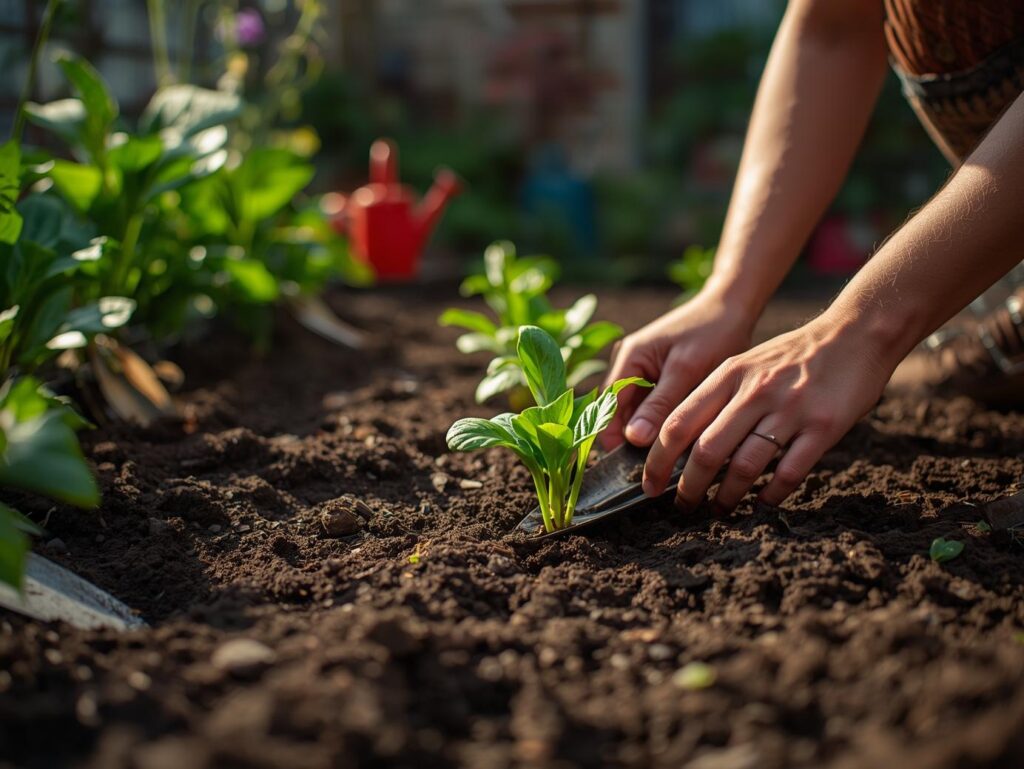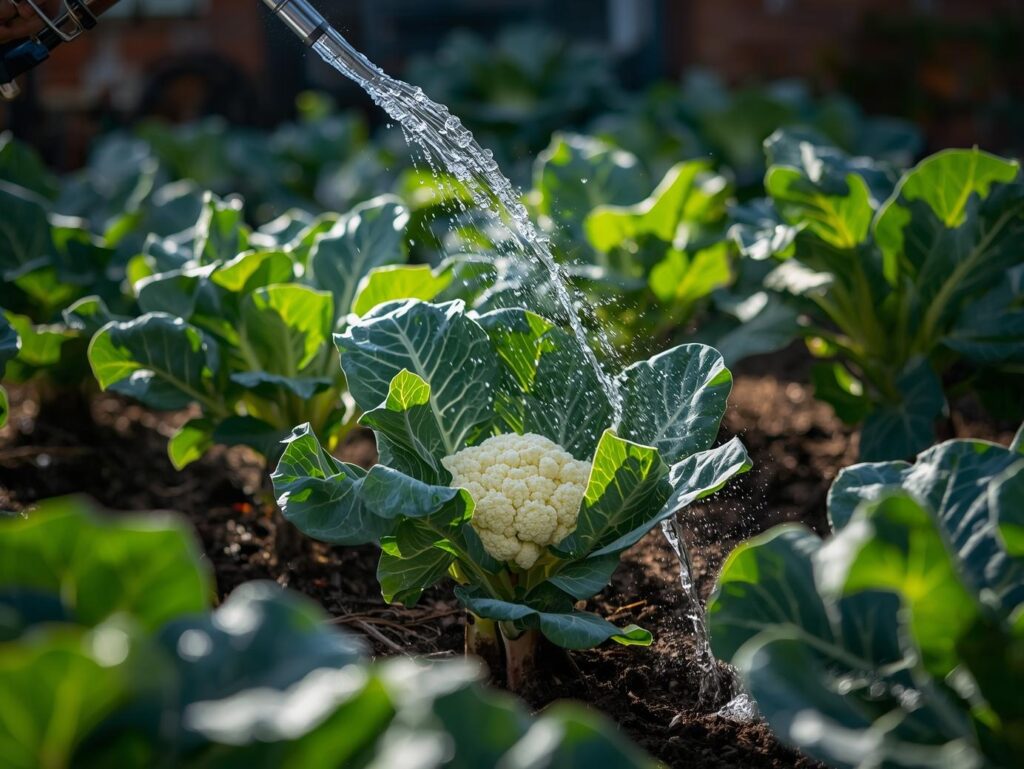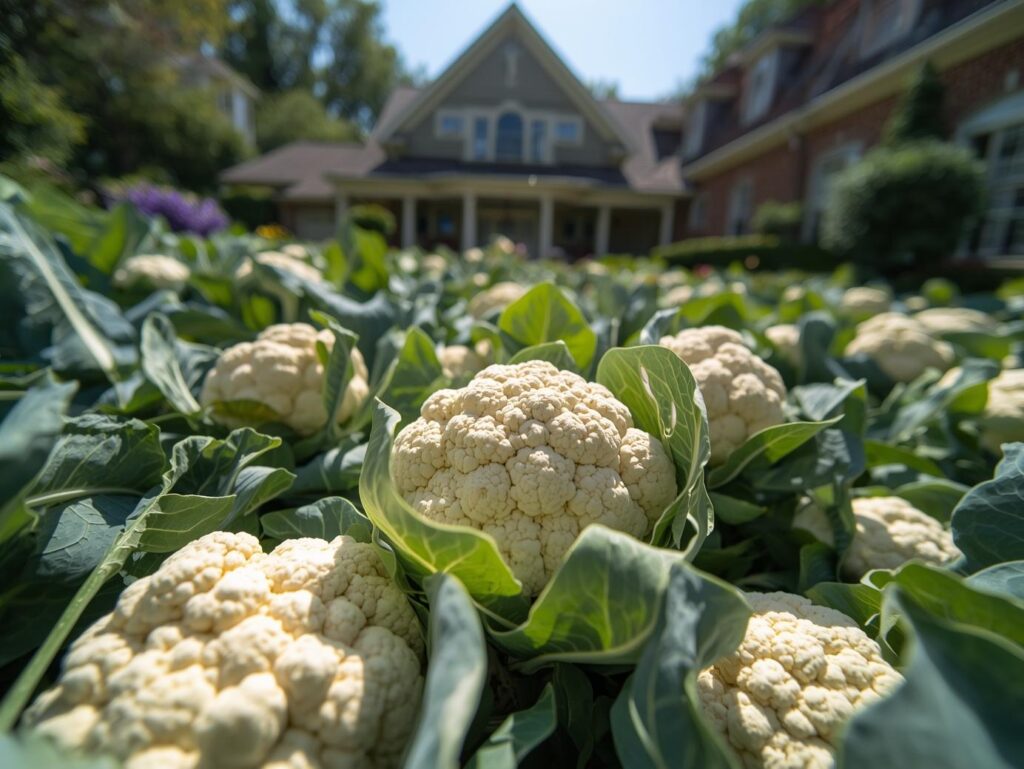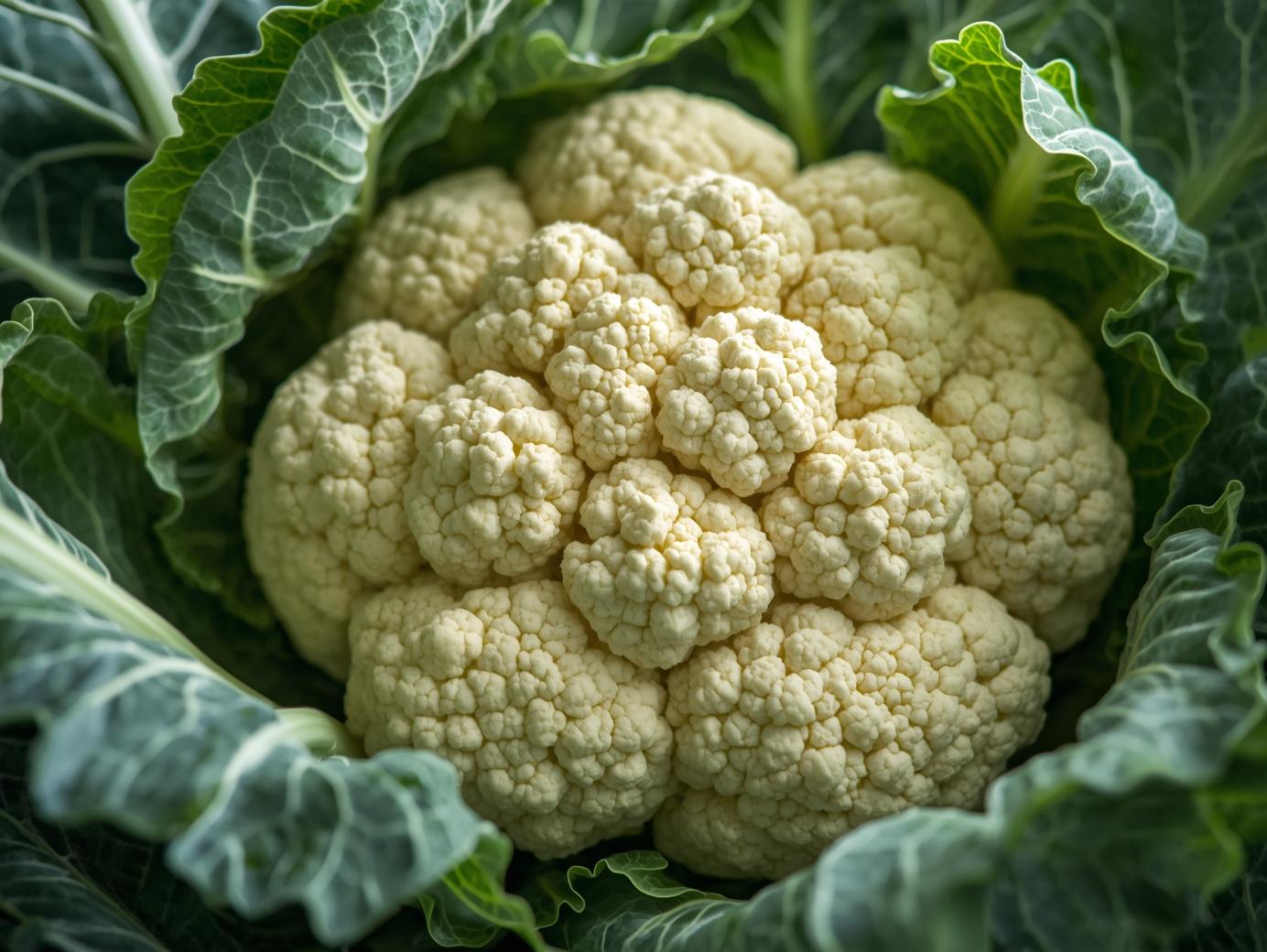Site Preparation
Before planting cauliflower, proper site preparation is essential to ensure healthy and robust growth. Select a courtyard area that receives at least six hours of sunlight each day. Clear away weeds, stones, and any debris that might obstruct plant development. A slightly raised bed can improve drainage, preventing waterlogging, which is particularly important for cauliflower roots. In colder regions of the USA, consider using black plastic mulch to warm the soil early in the season.
It is also helpful to perform a soil test before planting to determine the nutrient balance. Once the results are available, amend the soil with organic compost or well-rotted manure to enhance fertility. Adding compost not only improves soil texture but also supports beneficial microorganisms. A smooth and loose surface allows roots to penetrate easily, setting the foundation for strong, productive cauliflower plants.
Soil Selection
Choosing the right soil is the backbone of successful cauliflower cultivation. The ideal soil type for cauliflower is loamy, rich in organic matter, and well-drained with a pH level between 6.0 and 7.0. Heavy clay soils tend to retain excess water, which can cause root rot, while sandy soils dry out quickly and lack nutrients. To achieve balance, mix in organic compost and peat moss to increase moisture retention and nutrient availability.
Soil texture greatly influences the development of cauliflower heads. A fine, crumbly soil structure allows for consistent root growth and efficient nutrient uptake. Regularly testing soil pH ensures that it remains within the optimal range, as overly acidic conditions can hinder calcium absorption, leading to problems like tip burn. For most U.S. regions, incorporating lime can help neutralize acidity and create a more favorable growing environment.
Planting
Once the soil is ready, cauliflower planting can begin. In most parts of the USA, it’s best to start cauliflower seeds indoors six to eight weeks before the last expected frost date. Transplant the seedlings outdoors when they have at least four to five true leaves and the risk of frost has passed. Space each plant about 18 to 24 inches apart, leaving 2 to 3 feet between rows to allow for adequate air circulation.

When transplanting, make sure the soil around the roots is firmly packed but not compacted, allowing air and water to move freely. Water immediately after transplanting to help seedlings establish quickly. Using a light mulch layer can help retain moisture and keep the soil temperature stable. Early-season protection with row covers can prevent young plants from being damaged by cold or pests.
Watering
Consistent watering plays a major role in cauliflower growth. These plants need about one to one and a half inches of water per week, depending on the weather and soil type. Courtyard gardeners in warmer U.S. states should pay extra attention during dry spells, ensuring the soil remains moist but not waterlogged. Uneven watering may lead to small or discolored heads.

Drip irrigation is ideal for cauliflower as it delivers water directly to the root zone while minimizing leaf wetness, which can reduce disease risk. Always water early in the morning so the leaves have time to dry during the day. A layer of organic mulch around the base of the plants helps retain soil moisture and keep the roots cool during hot weather.
Fertilizing
Cauliflower is a heavy feeder that thrives on nutrient-rich soil. Before planting, mix a balanced, slow-release fertilizer into the soil. Once the plants are established, side-dress them with nitrogen-rich fertilizer every three to four weeks. This promotes steady leaf growth, which is crucial for developing large, dense heads.
Organic options such as fish emulsion, compost tea, or well-rotted manure are excellent for sustainable courtyard gardening. These natural fertilizers enrich the soil over time and reduce the risk of nutrient burn. Monitoring the plants for signs of nutrient deficiency, such as yellowing leaves, can help you adjust feeding schedules accordingly.
Pruning and Training
While cauliflower doesn’t require extensive pruning, removing damaged or yellowing leaves can improve air circulation and plant health. Some gardeners practice “blanching” by loosely tying the outer leaves over the developing head to shield it from direct sunlight. This technique keeps the curd white and tender, enhancing its appearance and taste.
Training the plants to grow upright can also prevent overcrowding in small courtyard gardens. By gently guiding outer leaves upward and providing support if necessary, you can ensure uniform head formation. Keeping the garden bed tidy not only helps the plants thrive but also minimizes the risk of pest infestations.
Pest and Disease Control
Common cauliflower pests in U.S. home gardens include aphids, cabbage worms, and flea beetles. Regular inspection of leaves, especially the undersides, helps detect infestations early. Natural control methods such as introducing beneficial insects like ladybugs or using neem oil sprays can effectively manage pests without harming the environment.
Diseases such as clubroot and black rot are also concerns. Crop rotation and good drainage can significantly reduce disease risks. Avoid planting cauliflower or related crops like broccoli and cabbage in the same spot year after year. Maintaining clean tools and removing infected plants immediately will help prevent the spread of pathogens.
Fruiting and Harvest
The final stage of cauliflower cultivation is rewarding for any home gardener. When the heads reach about six to eight inches in diameter and feel firm to the touch, they are ready for harvest. Use a sharp knife to cut the head along with a few surrounding leaves for protection. Harvesting at the right time ensures a sweet, mild flavor and tender texture.

In many U.S. regions, cauliflower can be grown twice a year — once in spring and again in fall — thanks to its preference for cool temperatures. After harvest, store the heads in a cool, humid environment to maintain freshness. Timely picking also encourages the remaining plants to produce secondary shoots for smaller but usable heads.
